The first time I performed retail arbitrage, I had to look up the products using the WIFI at a nearby McDonald’s because I didn’t have a smartphone. It was that long ago.
I didn’t even know what retail arbitrage was at the time. My brother had just told me about a camera his friend had bought for a huge discount, and I was looking for more things to sell after some success buying and selling used textbooks in college.
Looking back, it’s crazy to think that excitement over buying ~$1000 worth of cameras would grow into a business that sells over $2 million worth of products found via retail arbitrage each year. We sell far more than $2 million when you factor in the other product sourcing strategies we use, but retail arbitrage is still an important part of the business.
I love this business, and I’m very grateful for it.
Below you’ll find a guide about retail arbitrage based on over 10 years of experience I have with it. I hope it sets you down a great path!
Here’s what we’ll cover in this guide:
- What is Retail Arbitrage?
- Can you really make money with retail arbitrage in 2022?
- How to get started with retail arbitrage sourcing…
- How much money can you make with retail arbitrage?
What is Retail Arbitrage?
Retail arbitrage refers to the act of buying products in your local retail stores and then selling those same products through online marketplaces for a profit. The most reliable source of products is generally the clearance racks of stores like Walmart, Home Depot, and Target.
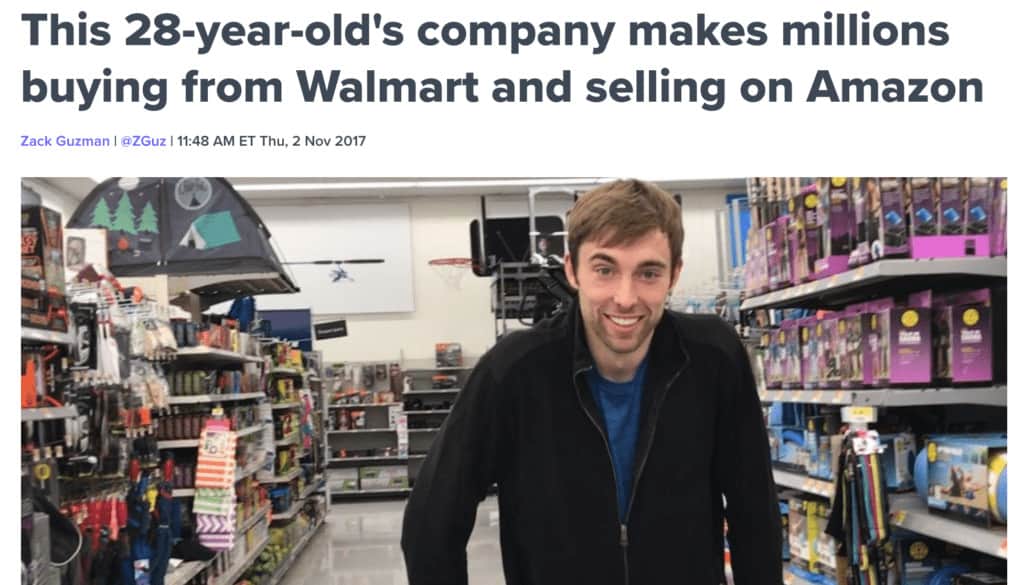
Items for retail arbitrage are generally acquired on sale or clearance, offering a significant discount compared to the retail price and the potential for good profits when sold online.
Items that are purchased via retail arbitrage can be sold on a variety of marketplaces. These marketplaces include Amazon, eBay, Jet, Walmart.com, Etsy, Craigslist, Facebook Marketplace, OfferUp, Let Go, and many others.
Later in this post, we’ll go through some of the best stores for retail arbitrage in terms of sourcing products.
In my experience, Amazon is the best place to sell when getting started, so this post will focus on Amazon FBA and FBA sourcing tips.
So, in a nutshell, retail arbitrage means buying low in a physical retail store and selling high online.
How Does Retail Arbitrage Earn You a Profit?
Retail arbitrage makes you money when you buy items at a significantly lower price than you will earn when you sell them on a marketplace like Amazon (after accounting for marketplace fees and shipping costs).
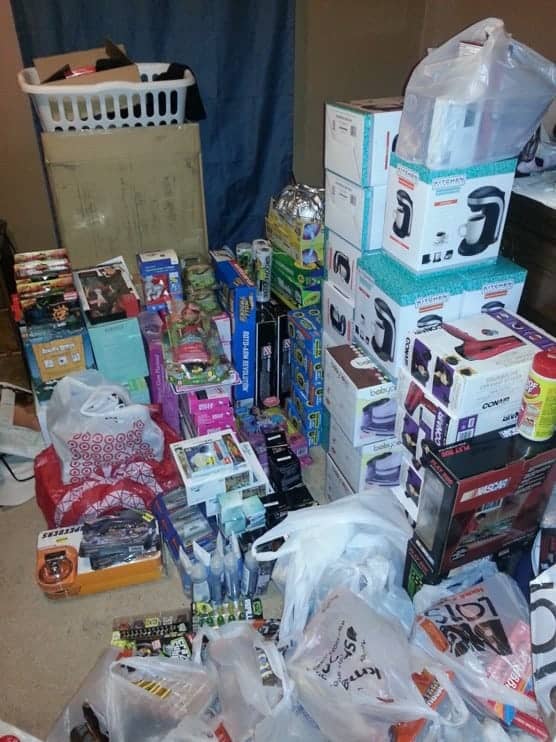
As an example, let’s say you can buy an item for $9 on the shelves at your local Walmart, and it’s selling for $23.99 on Amazon. After all of the fees and shipping costs, Amazon will pay you $17 after a customer buys your item. In this example, you would make a profit of $8 on your initial $9 investment.
(Note: there was some confusion on this point. The $8 profit is on top of getting your original $9 investment back. In the example, the item sells for $23.99 and $6.99 goes to Amazon and shipping. That leaves you with $17, $8 of which is profit.)
There is no guessing involved regarding the profitability – there are a variety of “scan tools” that allow you to scan the barcode of a product with your smart phone to see exactly what the product is selling for and how much you will pay in fees.
One of these tools is provided by Amazon – and it’s completely free!
We’ll talk more about scanning products soon, first let’s address the question everyone seems to have when they first learn about retail arbitrage…
Does retail arbitrage actually work in 2022?
Yes, you can earn a very nice profit with retail arbitrage in 2022.
My business has done over 7 figures of sales for products that are sourced via arbitrage every year since 2015. All of these products are being sourced the same way that I just described above. We’re going into retail stores, using a scan tool to identify products that can be sold profitably online, buying them, and then selling them online (mainly via FBA).
If we can do this, so can you.
Aren’t there too many people already performing RA?
No. This misconception largely comes from the fact that when you read articles and watch videos with hundreds of thousands or even millions of views, you naturally assume that a good chunk of these readers and watchers are taking the information they are getting and putting it into action.
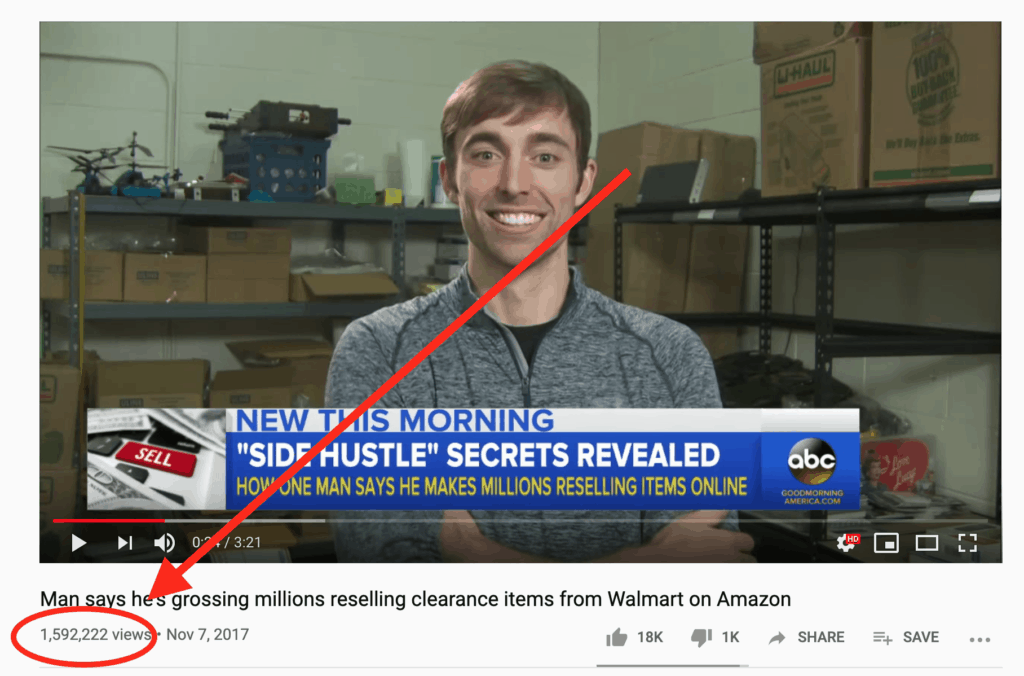
They aren’t. A very, very small percentage of people ever bother to try to find their first product.
And the vast majority of people who do try quit within a week or two and tell everyone that retail arbitrage is dead and that it’s impossible to find products.
This process is simple – but it’s not easy. There is a lot of hard work involved. As a beginner, it’s very time consuming to find products. This creates a big barrier to entry, so the vast majority of people – we’re talking 99%+ – who learn about retail arbitrage don’t ever see a profit.
Not because there aren’t products out there to buy and profits to be made. Based on the success of my own business and the hundreds of people I’ve helped use the same strategies I use, I know that there are a lot of arbitrage opportunities out there.
That’s good news for everyone who is willing to work through the frustrations that come with being a beginner. While there is plenty of competition in RA – especially when hunting for products that show up in BOLO Groups or products with big profit margins, there is also plenty of room for new people to carve out their own slice of this huge market.
How can you compete with the big RA operations?
First of all, there is no guarantee that you will even be competing with big RA operations. Depending on where you live, there may not be anyone doing RA at a large scale. If you live in a major metropolitan area though, there is a good chance that there are people doing RA at a large scale.
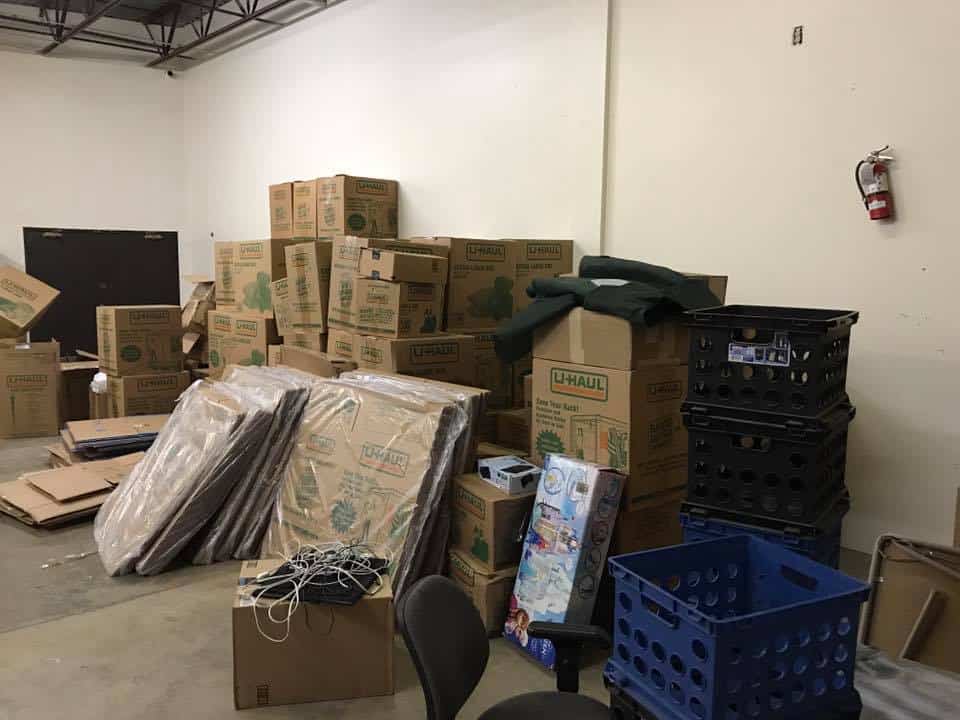
Fortunately for you, competing is as simple as beating them at their own game. Work harder. Get to stores earlier. Study the markdown schedules of the stores in your area and make sure you are hitting the stores at the ideal times.
At the end of the day, you have access to all the same stores, tools, and marketplaces that my business does – even the same products if you join our leads lists. While we may have a lot of experience that helps us operate efficiently, the training options I offer can help you bridge that gap quickly by giving you access to every strategy and operational system we use in my business.
Why would a store markdown products when they could just sell them online themselves?
While you may look at the revenue and profits that a business like mine makes and think that the numbers are huge, they are very tiny compared to the revenues and profits that the stores we source from enjoy.
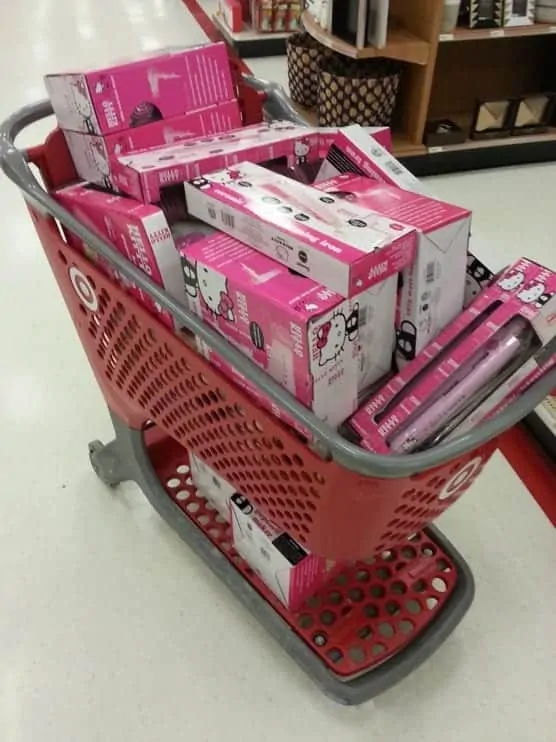
So while earning $500 profit from a day of sourcing clearance from a handful of stores may be a great day for you, those numbers wouldn’t even register for a business like Walmart.
Keep in mind, brick and mortar stores have limited space to stock inventory. Stocking that limited space with the inventory that will earn them the most customers, sales, and profits is a complicated and constantly-changing affair. When they need space on their shelves for a new shipment that comes in, sometimes that means they need to cut ties with a product that isn’t selling as well (or doesn’t have as much long-term potential) as that new product.
Simply put, sales and clearance help brick and mortar stores clear out inventory to make more room for new shipments. While you may look at this as them missing out on making money, it’s actually allowing them to make even more money on something else. And you’re free to take advantage of these leftover profits by buying those products and selling them places where space isn’t a limiting constraint – online.
How to Get Started with Retail Arbitrage Sourcing
Before you get started…
Before you try retail arbitrage, I’d like to give you a word of warning.
Through this site and our training programs, I’ve interacted with thousands of people who have tried retail arbitrage. One of the main causes of early struggles is when people aren’t clear on why they are doing retail arbitrage and how it fits into their bigger picture.
To help combat this, I designed a free 5-part series on the fundamentals of a successful online selling business. This program will help you get clear on your goals and create a plan of attack for the coming months and years.
If you are here because you are trying to find a way to make more money or gain more control of your time, I highly recommend signing up for this free program now.
You can learn more and sign up here.
Below you will find a more in-depth look at how to get your first retail arbitrage sale. If you sign up for the program above, I recommend coming back to read this rest of this guide once you have a chance to complete the class.
How to Get Started with Retail Arbitrage Sourcing
Getting your first product listed for sale on Amazon is a straightforward process. Here are the steps you need to take:
- Register for an Amazon Seller Account.
- Download the Amazon Seller App.
- Visit your local retail stores.
- Use the Amazon Seller App to scan clearance and sale products.
- Buy any that offer over $3 profit after fees and shipping.
- List them for sale on Amazon.
This process is one that you can get started immediately – and you should plan on starting as soon as possible.
Let’s go through each of these steps in detail now…
1. Register for an Amazon Seller Account.
The first step in getting started with retail arbitrage is setting up an Amazon seller account. This is the account you’ll need to sell items on the platform. It will also give you access to the tools you need to get started.
To start the process, head over to services.amazon.com.
When you get there, you’ll see this page:
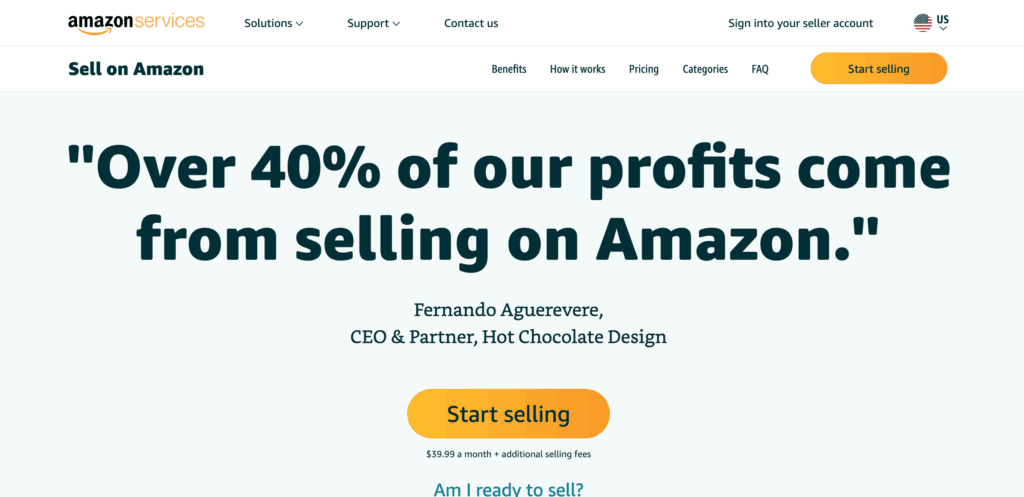
The yellow ‘Start selling’ button will start the registration for a Professional selling account, which will cost $39.99 a month regardless of how much you sell. Your other option is to scroll further down the page and look for the link to set up an Individual account:

The Individual account is free – but you will pay a $0.99 per item sold fee that you don’t pay on the Professional account.
In the long run you will want a Professional account because you’ll save money once you are selling more than 40 items a month, and because you need a Professional account to earn the buy box. Professional accounts also unlock the ability to apply to sell in restricted categories, allowing you to sell a wider range of products over time.
You can find a more detail discussion of this in my beginner’s guide to selling on Amazon. Click here to jump straight to the discussion on Individual versus Professional accounts.
In general, I would recommend going with the Professional as soon as it makes sense and you can afford it, but you are fine to get started with the Individual option. You can upgrade to a Professional account at any time.
Once you choose the account type you want, you will be required to fill out some forms to get your account setup. It should take less than 10 minutes, and then you will be able to get started selling on Amazon.
The guide I linked to above includes more details about this process in case you get stuck.
2. Download the Amazon Seller App.
Once you have signed up for an account, you will have access to a free app that will help you figure out which products to buy.
There are a variety of retail arbitrage scanning apps out there, but the Amazon Seller App is the best option as a beginner because it provides all the details you need and it’s free.
The app allows you to use the camera on your cell phone to “scan” the barcode of any product. Then it will show you the selling price on Amazon, what the fees to sell the item are, and a few other pieces of helpful information. We’ll walk through exactly how to use the app and evaluate products later in the post.
3. Visit your local retail stores.
When it comes to deciding which stores to get started at with retail arbitrage, there are a huge number of options. My recommendation is to start with whichever store is closest to you and that you have the easiest access to. Make it easy on yourself for your first trip and over time you can try out a variety of stores.
Here is a list of 16 of the best stores for retail arbitrage. I have purchased items at all of these to sell on Amazon in the past.
- Walmart
- Target
- Kmart
- Shopko
- Meijer
- Home Depot
- Lowes
- Menards
- Big Lots
- Walgreens
- CVS
- Rite Aid
- Toys R Us
- Bed Bath & Beyond
- Office Depot
- Staples
4. Use the Amazon Seller App to scan clearance and sale products.
Once you have the Amazon Seller App installed and are in a store, it’s time to use the app to find profitable items to sell on Amazon.
When it comes to finding items via retail arbitrage, I often get the same question: “what are the best items for retail arbitrage?”
The best items are items that sell fast at a healthy ROI. There is no silver bullet – you need to hunt until you find these items, and you shouldn’t narrow yourself to one type of item.
For any item that you are considering selling on Amazon, you should be scanning it with the Amazon Seller App, or using a similar tool before you make a purchase. This will tell you the exact fees on it so you can make an informed decision about that item. With these type of calculators available, you should know in advance what your expected profit is on any item you are going to sell.
Let’s walk through a hypothetical example of what this looks like to help you understand exactly how to use the Amazon Seller app to determine if items you buy via retail arbitrage will be profitable to sell on Amazon.
In this example, we’ll be using Gary Vaynerchuck’s Jab Jab Jab Right Hook to walk through the numbers. (FYI: It’s a book I really enjoyed, but that’s not the point of today’s post.)
So, let’s say you came across a copy of this book available to purchase for $8 at Barnes & Noble. These are the steps to determine if it’s an item that will be profitable to sell on Amazon:
Open the Amazon Seller App on your phone. Click on the camera icon in the top right-hand corner of the app (shown with the red arrow).
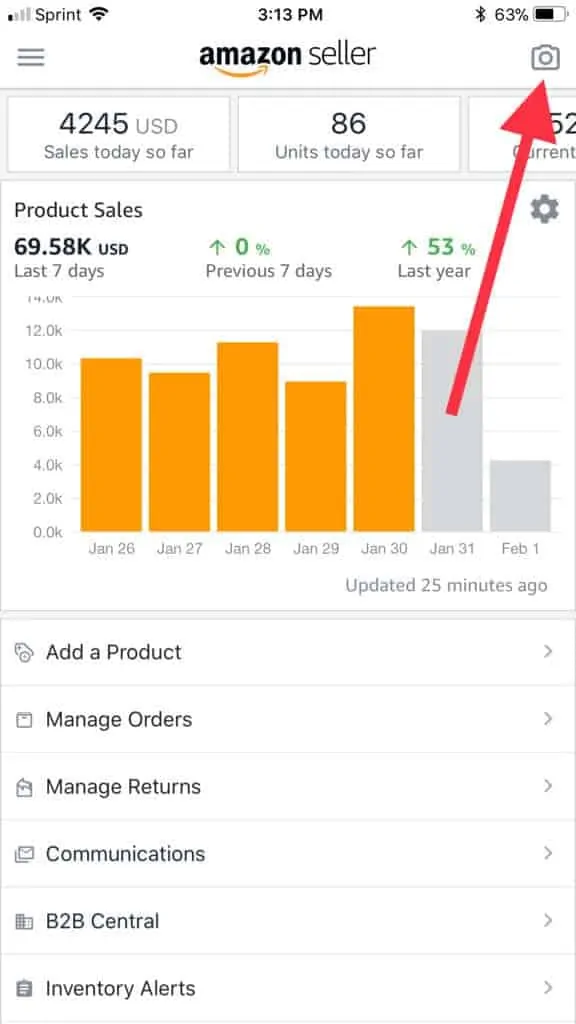
This will activate the camera. At this point, you want to focus your phone’s camera at the bar-code on the product, which will look like this:
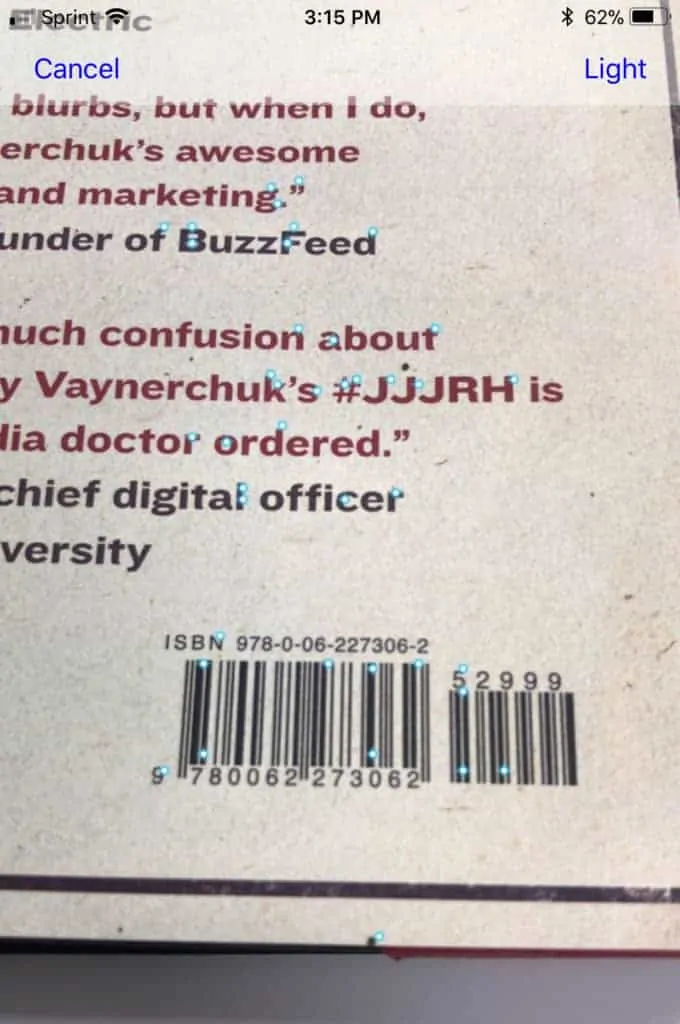
After scanning a product, you will see a screen like this:
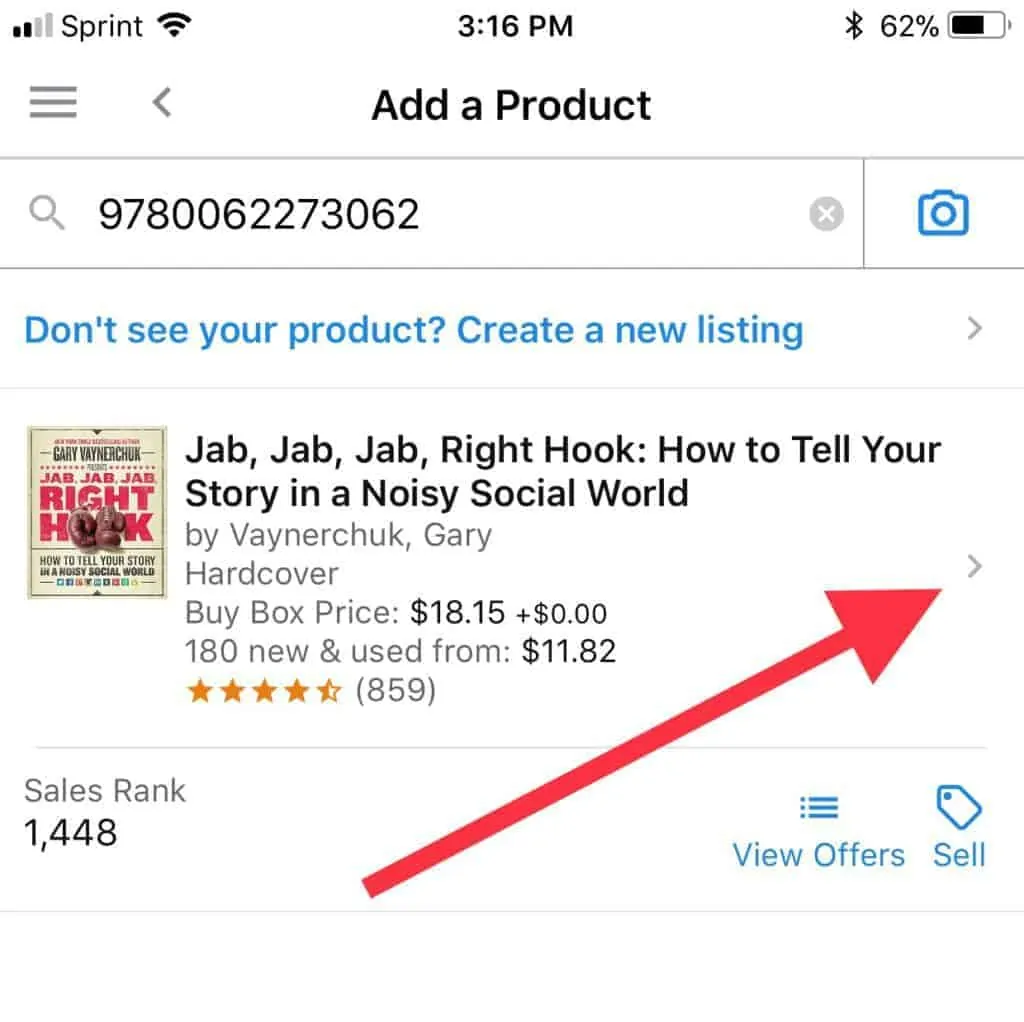
Then you will click on the arrow that is next to the item that matches the item you scanned. Indicated by the red arrow in the screenshot above. Then you will see a screen like this:
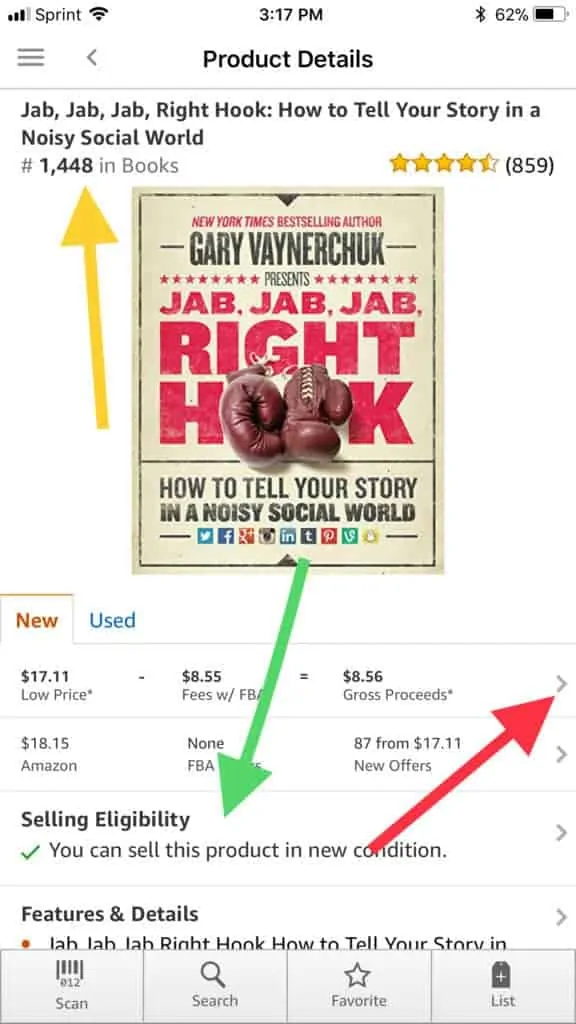
There are two things that we need to check on this screen above.
The first is to make sure that you are eligible to sell the item on Amazon. This is shown under the selling eligibility section and will show a green checkmark if you are able to sell the item (this section is marked by the green arrow).
The second thing to look at is the sales rank in the top left-hand corner of the screen. On this item, we can see the sales rank is 1,448 in the books category (shown by the yellow arrow).
The sales rank is an indication of how quickly an item is selling on Amazon in relation to other items in the category. When it comes to sales rank, the lower the number, the more often the item is selling. I won’t get into all of the details of sales rank in this post, but the key takeaway is the lower the number the better.
For your first few retail arbitrage trips, I recommend looking for sales ranks that are below 250,000 in their respective category. Over time I highly recommend adjusting this, but staying under 250,000 is a good range when you are just getting started.
If the app shows you are eligible to sell the item AND the sale rank is less than 250,000 it’s time to move on to the next step of the evaluation.
If either of the above criteria are not met, do not buy the item, and move on to scanning the next item.
5. Buy any that offer over $3 profit and 50% ROI after fees and shipping.
The next step is to check the return on investment on potentially profitable items.
We do this by clicking on the arrow on the right side of the screen as indicated by the red arrow in the screenshot above. That will bring up this screen:
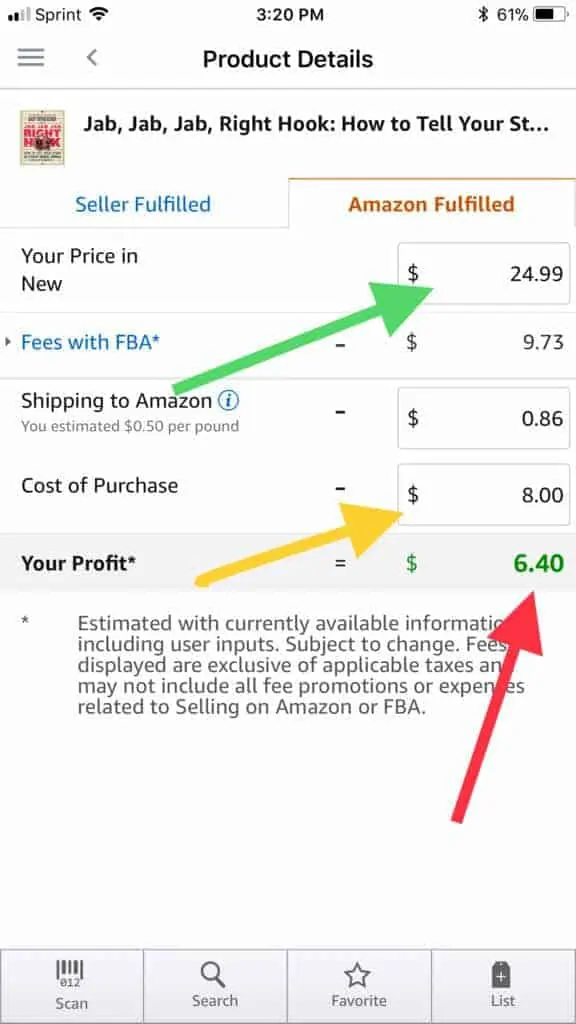
You will be able to enter the selling price (green arrow), your cost per pound to ship to Amazon (I use $0.50/lb), and your cost to purchase the item. In this example, I’m showing that I can buy this item for $8 (yellow arrow).
Once we have that information entered, we can see what our profit on the item will be based on the information we entered (red arrow).
At this stage, there are 2 quick checks that you want to go through.
The first is to see if the net profit number shown at the bottom is higher than your minimum profit threshold. Typically I recommend setting this at around $3 per unit.
This means that you won’t buy any items that you will make less than $3 in profit on. Having a potential net profit of less than $3 per unit does not allow for very much upside and a small drop in price can wipe out your profit. It’s your decision what minimum profit threshold you want to set, but $3 is what I use.
If the item meets your minimum profit threshold, then you will want to calculate the return on investment percentage. You can do this by dividing your profit by the cost of the item.
In this case, it’s your profit of $6.40 divided by your $8 cost, so the return on investment percentage is 80%. When you are first getting started, I recommend looking for items with a return on investment percentage that is greater than 50%.
To say this more succinctly, when getting started with retail arbitrage, you want a profit of greater than $3 per unit and a return on investment greater than 50%.
So this particular item meets all of the criteria for purchasing the item and should be purchased.
For any item that fits all of the purchasing guidelines, I recommend purchasing up to 6 of the item. In this example, if there were 20 copies of this book on the shelf for $8 each, then I would buy 6 of them.
The reason for this is to keep your inventory diversified to keep your risk as low as possible. If you buy 20 of an item and the price goes down after you buy it, then you have a much bigger problem than if you only have 6. It also generally takes longer to sell through more units of a single item, as compared to a few units of many different items.
As you gain experience, you will find scenarios where it makes sense to buy more – especially when you can find a high-demand item at a healthy profit.
When you are first getting started, I recommend scanning as many items as possible. Don’t make assumptions about what is selling and what isn’t. Doing this makes it easy to miss out on products you might not value that are still profitable to sell!
For each item that you scan, I recommend going through the evaluation in the order that I showed above. That order is as follows:
- Make sure you are eligible to sell the item
- Sales rank is under 250,000
- Profit is greater than $3 per unit
- Return on investment is over 50%
Going through the process in this order will be most efficient, and allows you to quickly move on from items that don’t fit your buying guidelines.
These are the guidelines that I recommend when you are first getting started with retail arbitrage sourcing. Over time as you gain more experience, you should adjust these guidelines based on your experience.
6. List them for sale on Amazon.
After you have purchased items to sell on Amazon, your next step is to list the items for sale on Amazon (and ship them to FBA warehouses if using Fulfillment by Amazon).
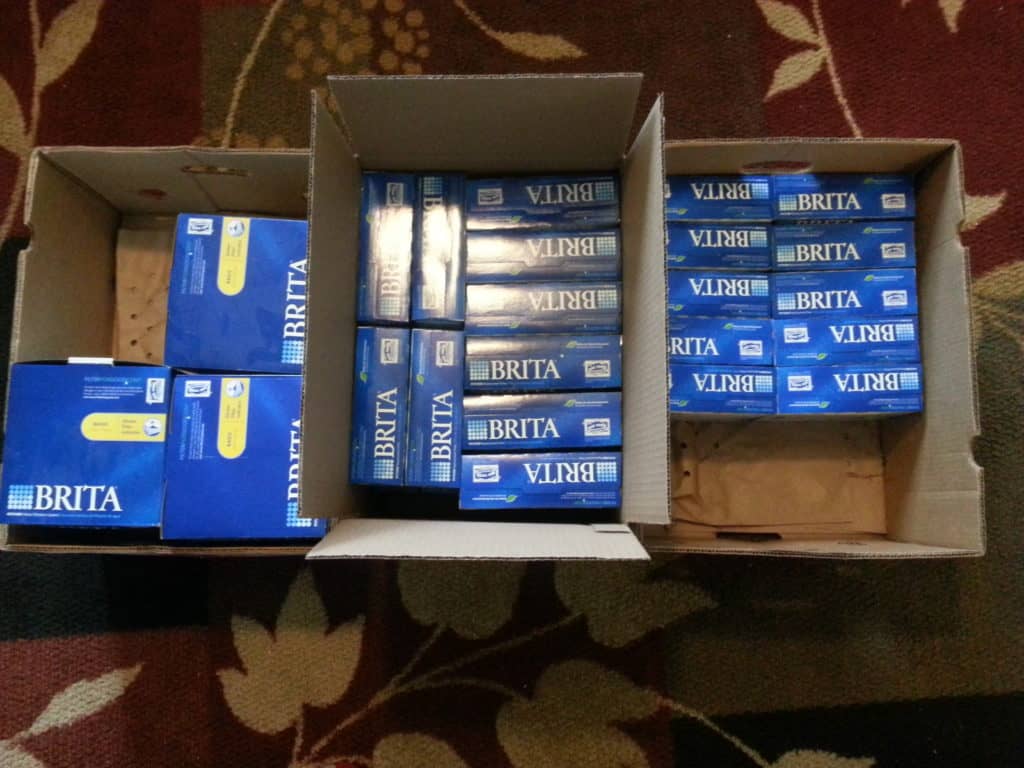
In my business, we use the FBA program for just about every item that we sell on Amazon. Utilizing this program allows us to ship items to Amazon in bulk, and they handle shipping items to the individual customers.
Fulfilling orders yourself (merchant fulfilled) will sometimes make sense, especially during Q4 if you are running out of time to get a product to FBA warehouses or if you want to take advantage of a temporary absence of FBA inventory for an in-demand product. But the vast majority of the time, FBA will be the better bet.
If you need help with the listing process, pages 23-38 in my new E-book (Get Your First Sale On Amazon) cover it in detail, complete with screenshots of the process. You can download the book using the form at the top or bottom of this post. Click here to jump there now.
How Much Money Can You Make With Retail Arbitrage for Amazon FBA?
As you’re reading, you might be wondering just how much money you can make using retail arbitrage strategies.
In the near-term, this largely depends on how much time and money you are able and willing to invest in the beginning.
The more money you are able to invest, the more inventory you will be able to buy. And the more inventory you have, the more you can sell.
For perspective, in my first three months selling online full-time, I was able to take $5000 in start-up capital and earn $16,376.35 profit. The $5000 start-up capital was money I had saved up from selling online in college and when I had my accounting job.
Expert Level Retail Arbitrage Tips
As you are getting started on your journey I want to share a few of my best FBA sourcing tips. This should give you the best chance of success.
Know your numbers!
The apps will give you all the information you need to stay profitable. I’ve seen many people get surprised by the Amazon fees, and it simply should not happen if you are using the app as outlined in this post.
Make as few assumptions as possible.
When you are just getting started with retail arbitrage, you need to be on guard against assuming things aren’t worth scanning. I’ve sold cereal for over $20 per box, sold beauty supplies, sold discontinued items for over 5 times their normal retail price among many other “crazy” items.
If I made assumptions about what these items sold for, I would have been wrong.
Learn individual store markdown schedules.
If you learn which day stores discount certain items, this can give you a leg up on your competition.
Along this same line of thinking, some stores will discount items further the longer items sit on clearance. Figure out how each store runs its business and use this information to your advantage.
For example, Target follows a predictable markdown schedule on their clearance items. Most items will start off at 15% off and the discount will increase the longer the item sits on clearance. The normal progression is 15% off > 30% off > 50% off > 70% off. There are exceptions to this, but at Target if you are buying at 70% off, that’s likely the lowest the price will go.
Be patient in learning the process.
Gaining the experience to know which items will be profitable and which ones won’t takes a lot of time.
In some ways, it’s similar to fishing. An expert fisherman and a novice fisherman can go out on the same lake and come back with vastly different numbers of fish. So be patient in learning the process, and as you build experience, you will become more efficient when sourcing via retail arbitrage.
Take as much time as you need at each store.
Many people start with a desire to get to as many different stores as possible in a single day.
I prefer the opposite approach.
I will go to one store and make sure that I get to ALL of the different clearance sections in that store. Sometimes this will take 30 minutes, other times I will be in the store for a few hours. By going through all of the items in a store in one shot I am not losing time to traveling between stores. I also learn a lot more about that store for the future.
Those are a few things that I highly recommend that you consider when you are just getting started with retail arbitrage. If you follow this advice, you will have a leg up on your competitors.
Learn more about retail arbitrage, Amazon FBA, and more…
I want to help as many people start their own businesses as possible. To help do that I’m giving a free month access to the Complete Arbitrage Playbook to anyone who wants to give this a shot.
All you have to do is use code: PROFIT at checkout.
The Complete Arbitrage Playbook will walk you through the entire process of getting started selling online using flipping and arbitrage techniques while helping you avoid many of the mistakes and roadblocks that I encountered on my journey.
It walks through everything in a step by step fashion, and has revealed how to start profiting with arbitrage to thousands of students.
Get your first month free with code PROFIT when signing up for the Complete Arbitrage Playbook.
If you have any questions, email support@onlinesellingexperiment.com or leave a comment below!

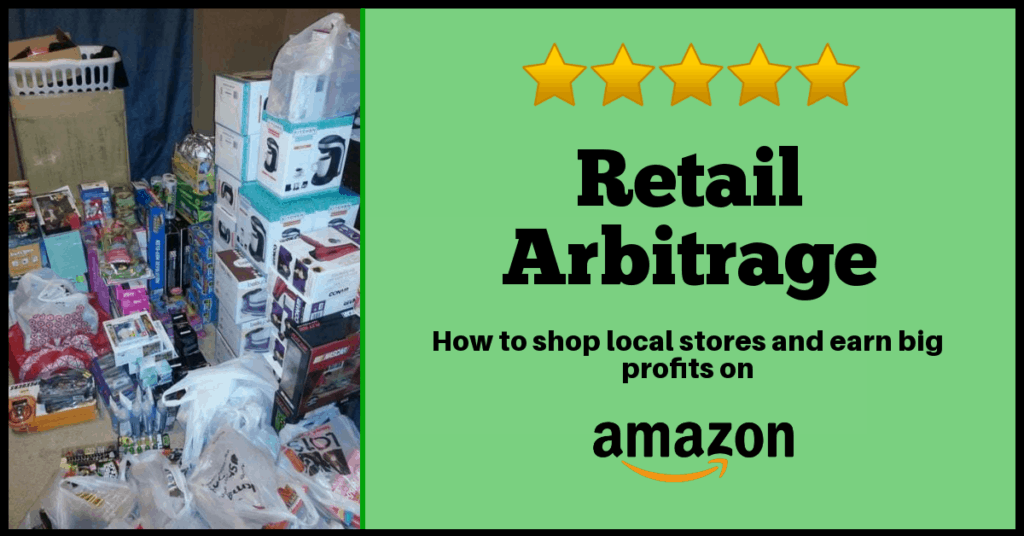

Hello,
I read that you can’t just sell any name product on Amazon. What if you found a great pair of Nikes somewhere? What does one have to do to sell anything on Amazon (that’s not restricted of course).
Thanks,
Danny
Hi Danny,
You will be eligible to sell any item on Amazon that you aren’t restricted for. So if it’s a restricted product then you will need to go through the approval process to be able to list it.
In general as long as you are approved to sell the product on your seller account you will fine. Some brands can still file intellectual property complaints even if it shows on Amazon you are eligible to sell the item, and a tool that can help you avoid that is called IP Alert. You can get $30 off with code OSE30 through our IP Alert referral link.
Best Regards,
Ryan
Hey Ryan,
First of all I want to say this is a very informational post! Thank you!
My question is about who sells the product once I send it to Amazon? Do I need to post it myself on Amazon or does Amazon sell it on my behalf, hence all the fees?
I hope my question is clear.
Thanks, Ryan!
Hi Dario,
Glad you enjoyed the post.
You will list your item for sale on Amazon prior to sending it to FBA warehouses. Then Amazon will take it from there and ship it to the customer when it sells.
Let me know if you have any other questions on this.
Best Regards,
Ryan
Hi Ryan,
This is such a wonderful article I found on google. I have few questions:
1. Can you send multiple items of different categories in single shipment to FBA warehouse?
2. Is there any issue selling brand names like Nike, Coach etc? Is Amazon going to ask if you have reseller permission or what if brand company complaint to Amazon that we are selling their item without permission. This can jeopardize the whole account. Please clarify.
3. If items are not selling for long time, is that an issue for your performance? Can Amazon suspend you for not performing?
Hi Ali,
Thanks for your questions:
1. Yes this is possible. Amazon will tell you which locations to ship to as you create shipments, but it’s definitely possible to have items from different categories go to the same location.
2. In general as long as you are approved to sell the product on your seller account you will fine. Some brands can still file intellectual property complaints, and a tool that can help you avoid that is called IP Alert. You can get $30 off with code OSE30 through our IP Alert referral link.
3. If items are not selling you will be charged storage fees for the items, but in general items that are slow to sell shouldn’t cause a suspension.
Hope that helps!
Best Regards,
Ryan
Have you bought from stores such as Nordstrom Rack, TJ Maxx, Five Below, etc? Will the app be able to scan items from any store?
Yes we have, and the app will be able to scan items from any store. Just make sure you scan the item’s UPC and not any store inventory tags.
Best Regards,
Ryan
Hey Ryan,
Thank you so much for all this amazing information! Something I was wondering before I got started is: I live in NYC where everything is a little more expensive and the stores are a lot smaller because the rent is so high. Do you think its still possible to do RA?
Would love to make this work and join your program!
Hi Abe,
Thanks for your comment. Even in NYC I would anticipate you should be able to find some retail arbitrage opportunities. There will still be stores looking to clearance items out and this presents opportunities for arbitrage.
I’ve found in some large downtowns of metro areas I’ve visited that there are more items that are large in size on clearance. This could be due to people living in these areas being more likely to buy what they can carry versus areas where everyone drives to the stores.
So overall I would say that some retail arbitrage opportunities exist in just about every area of the US.
Best Regards,
Ryan
This post is amazing. You do have to have a bank account to do this. I am trying to get into this selling with Amazon again. I was wondering about hiw to get the giod items to sell on Amazon. Your article is the best one i have read yet. Thank you so much for this.
Hi Ruth,
Great to hear you found it helpful!
Best Regards,
Ryan
If you pay taxes initially can’t you just recoup it when you file your end of year taxes with a receipt and the overall final price printed in it? Thanks for all your info!
Hi Scott,
Thanks for your comment. I will begin with the disclaimer that I’m not a CPA so this isn’t tax advice.
What you’ve said is accurate in many states. Each state has their own rules for sales tax and how they handle it when you pay sales tax at the time of purchase on an item for resale. But as a general rule there’s a way to recoup sales tax paid on items purchased for resale if you go through the state’s process.
Best Regards,
Ryan
What type of inventory system do you use?
Hi Kathy,
We use first in first out (FIFO) for our inventory accounting. Then for storage we use primarily Amazon’s FBA warehouses plus some stored at my local warehouse. And for keeping track of what we have we use a tool called InventoryLab.\
Hope that helps!
Best Regards,
Ryan
Ryan,
I have heard horror stories from individuals who sent their products to Amazon and had them pick items and ship them as opposed to fulfilling orders yourself and shipping them and it ended up costing sellers thousands of dollars of unsold inventory. When you first started, did you do the fulfillment yourself or still use FBA. I would rather do the fulfilling myself but want to see how you started.
Hi Steven,
When I first started on Amazon it was with textbooks back in about 2012. I did ship them myself at the beginning, but as soon as I found out about FBA that’s what I switched to.
You should do whatever you are comfortable with, but in my experience FBA makes things substantially easier than shipping yourself.
Best Regards,
Ryan
Hey Ryan,
Great article! How do you account for items that do not sell within a reasonable amount of time? Do you consider the cost of holding inventory that is not selling? Do you mark them down until they sell? What if they never sell?
Cheers,
Michael
Hi Michael,
Thanks for your comment.
We absolutely factor in how long we’ve had an item in stock to how we manage it.
If we have an item in stock for 30 days then we’ll review the pricing to see if it’s appropriate. If it is then we’ll keep the price the same, if we see the pricing is too high then we’ll lower the price.
We repeat that process after it’s been in stock 60 days, and then again after 90 days. The longer it’s been in inventory the more likely we’ll cut the price.
And most everything will sell if you give it enough time, but on items that we haven’t been able to sell on Amazon after about 6-12 months, we’ll occasionally remove them and sell them on eBay instead. This happens on a very small percentage of items, way less than 1% of items. About the only time we truly can’t sell something is if it’s an expiration dated product that has expired, and in that case we’ll donate the product to a local food shelf that accepts this type of product.
Hope that helps!
Best Regards,
Ryan
So i’m a little confused about your book example. You spent $8 and got a “profit” of $6.40. I am just a little confused on how that’s a profit if you ended up with a $1.60 loss. Am I missing something important?
Hi Justin,
The $6.40 is after the fees and the buy cost of the book. So in the example the total payout from Amazon after fees would be $14.40. Then if you subtract the $8 buy cost from that you end up with your profit of $6.40.
Let me know if you have any other questions on this.
Best Regards,
Ryan
Ryan,
I like the fact you gave for free 6 easy to understand steps to getting started in RA. I’m starting today 2/28/2021. I’m retired and looking for an alternative to other Gig economy jobs. I’m currently driving and shopping for others earning $1,300 a month. If I see any success with your first 6 steps then I’ll definitely pay for additional training and challenges. I’ve subscribed and downloaded your free ebook. Thank you for sharing your wealth of information.
Scott
Hi Scott,
That sounds like a great plan, and best of luck as you get started!
-Ryan
I do flea markets and I think this sounds really good but I am really confused about something. The shipping to Amazon. How are you figuring . 50 lb? And just what is FBA? Does your ebook talk about this? And where do you find the information on where to ship the products. I know I am asking alot and I apologize for that. Just hoping you can point me in the right direction
Hi Lisa,
Thanks for your comment.
The $0.50 per pound is based on what we typically pay per pound to ship to Amazon on the size of shipments commonly done by new sellers. It’s a good starting point and then you can adjust to actual numbers after you’ve done a few shipments.
FBA is Fulfillment by Amazon. Essentially you ship your inventory in bulk to Amazon and then they ship it to customers as the items sell. If you use this program they will tell you where to send the items.
All of this is covered in detail in my course which you can learn more about here: The Complete Arbitrage Playbook.
Let me know if you have any questions.
Best Regards,
Ryan
When registering on Amazon what type of business do you select? Do you register as a private business or and individual? What type of information do you need to obtain seller status on Amazon? I’m looking forward to trying your technique, but would like clarification/tips on setting up Amazon professional account.
You can register as an individual, which essentially means you are a sole proprietor. There are benefits to incorporating, but many people find the process difficult when first starting so go as an individual at first and then worry about setting up an LLC or s corp down the road. We are planning more content exploring all this, but here are some other articles that may help you:
Do you need a business license to sell online? What about a seller’s permit?
Business Structure I use for selling on Amazon and eBay
Thanks for posting such an excellent guide. I’ve now been reading about Retail Arbitrage for days. One thing I cannot seem to find anywhere (and I realize this is an embarrassingly newbie question) is HOW exactly one gets their items to an Amazon warehouse for FBA. Would a person just deliver them to the warehouse themselves? Use the postal service (which would seem to be an incredibly expensive option here in Canada)? Something else I have just completely missed? I’m honestly excited at the prospect of this whole idea.
You have to ship your items to the warehouse(s). You cannot drop them off yourself. Amazon does offer special partner rates that can help bring the costs down. This may help:
https://onlinesellingexperiment.com/guide-to-creating-your-first-amazon-fba-shipment/
hi I live in Turkey
can I also use the seller app and scan for a profit calculation? or is it valid in USA?
Hi Aycan,
You should still be able to use the seller app to calculate the profit of selling items on Amazon.com. You’ll just want to make sure you are calculating the fees based on the marketplace you will be selling your items on.
Best Regards,
Ryan
So say I scan and was approved to sell 50 items. I mail to FBA in bulk all together? What about the UPC label? Donns
Yes, you would mail the items in bulk to the Amazon warehouses that Amazon tells you to ship to.
You can either use the UPCs already on the product as item identifiers, or you can apply your own labels. You’ll have the option to select which method you prefer as you go through the FBA shipment creation process.
Best Regards,
Ryan
Hi there!!
Thank you so much for this wonderful article. Quick question for you though: do you spend much time/money advertising the products you have for sale on Amazon? Or if your items are priced competitively, etc will you just assume they will sell?
Thank you!
Hi Jordan,
Thanks for your comment.
Most items we sell we don’t pay anything in advertising to get them to sell. If you buy items that are in demand as is talked about in this post it’s generally not necessary to pay for ads.
That’s not to say that ads won’t help your items sell faster, but again they generally aren’t needed.
Best Regards,
Ryan
thank you. very informative.
Ryan
Thanks again for your great guidance. I have 2 questions
1. The barcode to be use is one that buy with the scanner (unique number, letters for me) or I can use the barcode of the product that I purchase?
2. If a product has not rank, but it is a potential good profit, do you recommended to purchase it?
Thanks
Octavio
Ryan
What to do as in many instances while searching for a product it appear as need approval. What is the easy way to get such approval and why too many product require such approval.
Many thanks
Octavio
Ryan
Thanks for all your great information.
My question is if when you want to print the labels, are they sent to you for printing via app and what happened if you by accident damage the label?
Hi Octavio,
Thanks for your comment. For printing your item or box labels you will be able to access them from Seller Central. If you accidentally damage them, you will be able to print them again if needed.
Best Regards,
Ryan
Informative post thank you Ryan. Would love a copy of this.
Hi Vee,
Great to hear you enjoyed it! I’d recommend book marking this page, as it will be available to review any time you’d like.
Best Regards,
Ryan
Hi Ryan,
How about taxes? Do I have to collect taxes on my Amazon retail arbitrage sales?
Hi Yeda,
I recommend reading through some of the blog posts on sales taxes that we have on this site. You can do a search here: onlinesellingexperiment.com/blog
Read through some of those and if you still have questions, let me know.
Best Regards,
Ryan
HELLO RYAN
What kind of way we have to follow if amazon requests an invoice for the product we bought in the retail store.
I wish you good work
Hi Kaslikel,
Thanks for your comment. If Amazon is requesting invoices for a product you sourced via retail arbitrage then I recommend submitting the receipts. We haven’t had a problem with them being accepted so long as we are buying from a reputable retailer, and it clearly displays what the item is that we purchased.
Best Regards,
Ryan
I amazon rejected my receipts from Walmart saying that I need an invoice. How can I get amazon to accept the receipts?
Hi R,
If you are looking to get approval for a new brand or category then you will need an invoice from a manufacturer or authorized distributor. That’s what Amazon requires for new approvals.
Best Regards,
Ryan
Hi Ryan,
This post was very helpful! I’m eager to get started with RA. Is the free E-Book still available? I added my email address to have the book sent to me, but I never received it. I even tried with another email address, but the book never arrived to my inbox.
I really would love this book!
Thanks for the inspiration!
Hi Ash,
Thanks for your comment, and glad to hear it was helpful!
Yes it is and I just tested our system and it’s still working. Can you try resubmitting your email on the home page? If you try again and still aren’t able to receive access, send us an email to support@onlinesellingexperiment.com and we’ll help you out!
Best Regards,
Ryan
Hi
Just read this and I will start this now. I was wondering how you determine the price to set to sell the product after you see what others have priced it to? I assume that this you have to figure out in the store before you buy the product so you know what your selling price should be?
Thank you for really great info.
Best
Per
Hi Per,
Thanks for your comment. Our general rule is to price between $0.01 and 1% above the lowest FBA seller on the listing. If there is a gap in pricing between the lowest and 2nd lowest FBA sellers on the listing, then we’ll typically price in line with the 2nd lowest price in the listing.
So that’s the price we use when evaluating if we want to purchase an item as well.
Best Regards,
Ryan
Do you pay tax on the goods you buy or do you have a tax exempt number you use? If you do pay tax, do you also pay tax on the income you earned off that product?
Thanks for your comment.
We have a resale certificate and we do not pay tax at time of purchase whenever possible. Certain stores won’t accept our resale certificate, so we do pay sales tax at those stores.
And then on the profits we make on the items we sell, we do pay income tax on that.
Hope that helps!
Best Regards,
Ryan
I have read this post, and have been truly enlightened. I ran across this while getting ready for work. It was listed on the morning news here in Cleveland where I am surrounded by Amazon warehouses. I have the time and the money just lacking the knowledge which i am gaining by this post and other links. Looks like I have something to do after retirement thanks.
Hi Earl,
Great to hear you’ve found it helpful. Best of luck if you test it out!
-Ryan
I really enjoyed reading this—it was well written and easy to understand. You discuss your revenue in April but could you give me an idea of how much profit you made in this month?
Do you use coupons and store credit cards to help reduce your price when purchasing?
If buying online, how could I tell how I would make on the item (since I do not have the UPC on hand)?
Hi Sarah,
We definitely use coupons and store credit cards where we can to keep our costs low.
When buying online, many retailers will list the UPC in the product description. If that’s available we will use it. If it’s not, then we’ll use the title and pictures to find the matching item on Amazon.
Best Regards,
Ryan
Hi Sarah,
Thanks for your comment. I’d recommend reading through some of the older financial results posts on this site. They’ll provide some useful info on how much you can expect to make.
Best Regards,
Ryan
Great information. And what kind of arbitration is that where people buy stuff off of wholesalers and retail on Amazon? Eg. from Alibaba, etc.?
Hi Eve,
Thanks for your comment.
It sounds like you are referring to either wholesale sourcing or private label sourcing. I don’t have a ton of content on Private Label sourcing at the moment, bu if you are interested in learning more about wholesale, you can read this post: https://onlinesellingexperiment.com/wholesale-amazon-intro/
Best Regards,
Ryan
After buying an item. Can I send it directly to the customer so that I can make more profit.
Hi Willy,
Yes, you can send directly to the customer. This is called merchant fulfilling.
Thanks!
My question is in your example you priced the item at $24 but the price low price and amazon buy box price showed $17.11 and 18… why wouldnt you use these prices if this is the buy box amount which items are selling for? Thanks
Hi CJ,
This was just for an example of showing how the app worked. If I was actually selling the item, I’d likely price the item around or slightly above the current buy box price.
Best Regards,
Ryan
Wow! Thank you for all the info!!! I have been wanting to sell online for a long time, but no one will give any info without charging $1000s, this is great! Do you have any advice for naming my Amazon store? I feel like naming is important. Anything that I should stay away from using and also something that says I sell lots of different things. Also, do you suggest keeping receipts for any certain amount of time to prove my purchase?
Hi Sam,
Thanks for your comment.
For naming your store, I’d go with something simple that sounds professional. Beyond that, I don’t have any specific guidelines that I recommend.
And I would definitely recommend keeping all your receipts on hand. We scan them and in theory we have receipts for everything we’ve ever purchased in my business.
Best Regards,
Ryan
Hi Ryan
Thanks for sharing! I am confused when you scanned your item and it came out the lowest price was around $17 and you still put your price $24.99 witch was a lot higher than others. In this case, how do you compete with other sellers?
Hi Ivy,
This is just an example for showing how the app worked. If I was going to sell this item, I’d likely price at or slightly above the current buy box price.
Best Regards,
Ryan
Awesome read, but I am a little confused in regards to having invoices from legitimate suppliers to be able to sell FBA. My understanding was that arbitrage FBA can get your seller account suspended. How do you go about by passing this process?
Hi Andres,
In my experience as long as you are buying from a reputable retailer Amazon will accept the receipts if you need to prove authenticity. For example a receipt from Walmart is likely to be seen as reputable, whereas a receipt from a local Mom & Pop discount store is not likely to be seen as reputable.
Best Regards,
Ryan
Ryan, do you need to have a business license to set up the Amazon seller account? I want to thank you for all you advice. This sounds like something worth checking out. I appreciate your truthfulness.
Hey Jeffrey, this post should answer your question:
Do you need a business license to sell online? What about a seller’s permit?
After clicking on the “Individual Seller” link several times Amazon will only allow me to set up a Professional selling page at a cost of $39.99 per month. Any idea what is going on?
what does FBA mean? This is the first time I have read about this.
Thank You,
Dee Dee
Hi Dee Dee,
FBA stands for Fulfillment by Amazon. It just means that Amazon will be storing your products and shipping to customers when the sell. If you ever come across another acronym you aren’t familiar with, I have a list of common acronyms for online selling here.
Best Regards,
Ryan
They are building an Amazon warehouse about 4 miles from my home. Is there an option to deliver products there instead of mailing to another warehouse?
Hi Susan,
Unfortunately no. Products must be shipped to Amazon’s warehouses.
Best Regards,
Ryan
Thanks for the information
Hi Ryan
Thank you so much for all the clear and useful information, I’m planning on getting started on selling on Amazon though I live in Eastern Europe.
Your posts are very helpful and give me encouragement in getting started.
Thank you again
Hi Ryan,
Can arbitrage be done successfully on-line, such as with Kmart etc.?
(And if so, can you just deliver the product straight to Amazon?)
Thanks.
That is called online arbitrage. Here is a guide on it:
Online Arbitrage: Source More & Maximize Profits in 2021
Do I have to pay the first month fee $40 dollars or is it free to sign up I’m confused please let me know
There are two options, a free account and one that costs $39.99. The free one has a $0.99 per item sold fee though, and the Professional account offers a lot of benefits.
Here is a breakdown:
https://onlinesellingexperiment.com/amazon-seller-accounts/
Hi! I am just looking into doing this as a side job (stay at home mom currently), and it seems like everything I am scanning says I am restricted to sell. Are more restrictions lifted if you sign up to be a professional seller? Thanks!
Yes, being a Professional seller will open many doors, especially since you can apply to be “ungated”. Depending on how much sales history you have, many times you can get autoapproved which means you don’t have to do anything more than ask.
For anyone wanting to read more about the account types:
https://onlinesellingexperiment.com/amazon-seller-accounts/
And what about when Amazon asks you to provide invoices for the products from all those places and suspends your account in the end because they do not accept pro-forma invoices and receipts. How can you get a formal invoice from Walmart or Kmart?
Hi Chris,
Amazon will usually accept retail store receipts for proof of purchase / authenticity. I’ve had them accept retail receipts multiple times this year for a couple times when they were requested.
Best Regards,
Ryan
Can you at least tell the story about the 20 dollar of cereal?
Hi James,
I will consider writing up the full post on it in the future. The item though was Strawberry Frosted Cheerios. It looks like it is now discontinued, but you can see the Amazon page here.
Best Regards,
Ryan
Ryan,
Quick question = I haven’t seen where you discuss HOW to get the product to Amazon FBA and what the shipping costs for that are? Is that the $0.50 per lb estimate in the app? Do you ship a single product each or bulk it to them?
Thanks,
Michael
Hi Michael,
That is the $0.50/lb estimate. This blog post should help as well as it walks through the process.
Best Regards,
Ryan
Hello Ryan,
Thank you for making this article. I’ve read some and this one is well put. Thank you for taking your time of putting detail in and giving some great insite. I’m going to be starting my own in the next couple of weeks. Wish me luck. 🙂
Hi Terra,
Thanks for the comment, and glad you enjoyed this article. Best of luck as you start out on your own! 🙂
Best Regards,
Ryan
Hi Ryan
Very interesting information
Should I need to have authorization from any Brand either if the Amazon app says that I’m able to sell the product as new condition?
Thanks in advance
Hi Yessika,
If the app says that you are eligible to sell in new condition, then you shouldn’t need any additional written approval.
Best Regards,
Ryan
Hey Ryan
Thanks for the post, it is very informative.
I was wondering does this method work in any country such as Ireland (my country).
Will it be more difficult as the shipping costs will be higher ?
Thanks in advance
Saif
Hi Saif,
I do think that it would work in other countries. I haven’t done it personally but the same things should apply. If you are shipping to the United States shipping costs would definitely be a lot higher. I’d recommend first starting off selling on the Amazon location that is closest to you. So for you I would look at selling on one of Amazon’s European marketplaces.
Best Regards,
Ryan
Is there a way to get started without purchasing a $100+ printer to print shipping labels?
Hi Aaron,
Yes, you can have Amazon label your items for you, and the fee for that is $0.20 per item.
Best Regards,
Ryan
Hey Aaron. Not sure if you’ve moved forward on this. I just use a regular ink-jet printer and have yet to run into a problem doing FBA. I’m always careful that the ink doesn’t smear. Maybe I’ll get a fancy printer when I start making more money 🙂
Hello, thank you for sharing your information. I’m a busy mom of 3 kids and would love to make some extra money. Do you think selling FBA/arbitrage could be done “as needed” or when I have the time or is it only worth it if I’m all in for a full time gig? For example, could I just add a look through the clearance isle when I’m out grocery/necessity shopping or would it be too small of an investment? Also, do you have a post about buying from wholesalers and labeling with a personal brand/business label (I can’t remember what that is called)? I’d love to consider that as well. Thanks so much!
Hi Bailey,
I think it can be done on “as needed’ basis, or when you have time available. I was doing this on the side when I still had a full time job about 5 years ago and I found it to be worthwhile. The more time you put in the more returns you are likely to see, but you can definitely start with some time here and there. The only thing you would have to do on a daily basis would be respond to any customer messages. You likely won’t even get 1 per week initially but you do need to respond to these messages within 24 hours.
Hope that helps!
Best Regards,
Ryan
Hi Ryan!
I’m new on seller and I’ve been having many doubts. I bought some products but It’s been difficult to decide between FBA and merchand… seems we will have no profit with FBA and difficult without that, more with heavy products.
Did you have some type of mentoring or coaching?
Please email me.
Thank you!
Hi Vanessa,
In my opinion FBA is almost always the better choice. We use it over 99% of the time in my business.
In regards to coaching, you can see the options available on this page: https://onlinesellingexperiment.com/coaching
Best Regards,
Ryan
Kelly V says:, thanks for the article post.Really thank you! Great.
Thank you!
Best Regards,
Ryan
Great info as always. I found your site late last year and only deviate from your advice slightly as I gain experience. Our side hustle is growing every month and we reinvest it all. Tonight we’ll try out processing with a dymo+usb scanner. I’ve heard good things.
Do you have any resources or advice on resale certificates? I know you only use it when it’s worth the hassle purchase wise, but what about store wise? Try it everywhere once? Always skip target, Kohl’s? Ever had it rejected and your purchase refused outright?
Hi Matt,
Glad to hear the business has been growing every month for you!
The resale certificate is something I should probably do a full post on. A few quick notes that in general I would try it every where once with a couple of exceptions. I’d definitely skip it at Target and Kohls as you mentioned, as they are not technically reseller friendly.
If in doubt, I’d just call into the store and ask if they accept resale certificates. That way you can find out without them knowing exactly who you are in the event that they don’t accept them.
Best Regards,
Ryan
You listed 16 of the best stores for Retail Arbitrage but Big Lots was listed twice. Is there another store that was not listed?
Hi Julie,
Good catch! Just updated the list now.
Best Regards,
Ryan
Hey. Just wanted to let you know. Another great place is Dicks Sporting Goods, as they will have $70 shirts for $5 on clearance rack. Just an FYI
Thank you very much for the post. clear and to the point. The graphics really help. I have a bunch of items listed with a rank between 100,000 and 200,000 and I have not sold any items for over a month and I am in the buy box. Is this normal?
Thanks
Hi Kelly,
Thanks for the comment. This wouldn’t be completely out of the ordinary, as my goal with items is to sell them within 3 months. The things that I would look at are how you are priced in comparison to your competition, what your fulfillment method is, what the price history charts look like, and see if there’s anything that looks like has potentially changed with the listing since you sent the item to FBA. The main thing I would do first is evaluate pricing, and then from there if another few weeks go by you could evaluate the other options.
Best Regards,
Ryan
Hi Ryan,
Excellent article – the best online even. I have signed up for the pro account and went to tj maxx today to scan items with the amazon seller app. Most of the items were not found in amazon, is this normal ?
Hi Syl,
Glad you enjoyed the article. You may have been already doing this, but at a store like TJ Maxx where they have their own barcodes on the items, you need to scan the actual product tag barcode, and not the store barcode. The barcodes on the TJ Maxx tags won’t lead to the product listings on Amazon.
With that said, there will be times when not a ton of items are found on Amazon. If we can’t find the item on Amazon, then we’ll typically look up the item on eBay completed listings to see if it’s viable to sell there. You can find more details on that in our eBay completed listings post.
Best Regards,
Ryan